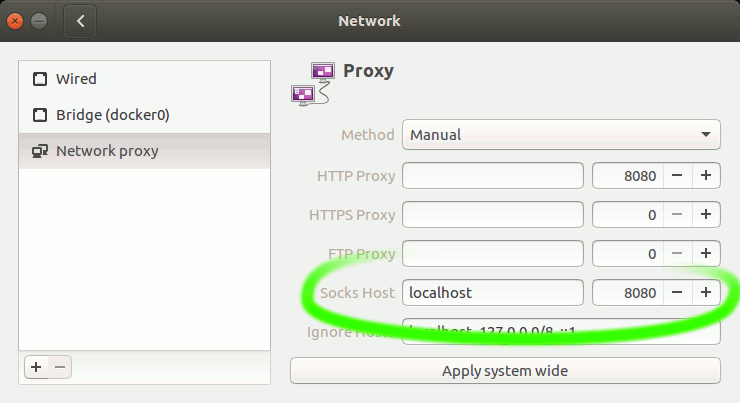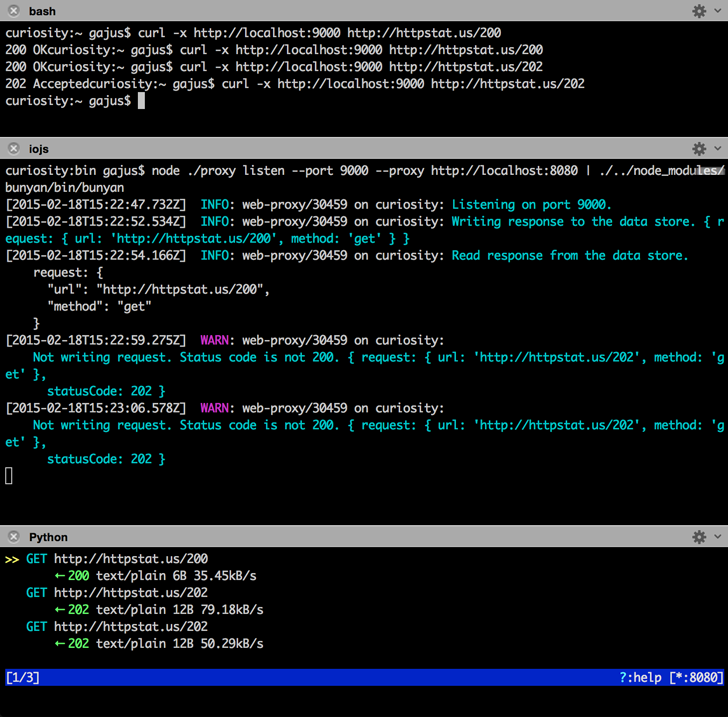
Order to let the user see all client-server interaction (but it won't show Curl will output lots of info and what it sends and receives in If you can't understand the responses: use the -v flag to get verboseįetching. If curl fails where it isn't supposed to, if the servers don't let you in, Note that the HTTP server must have been configured to accept PUT beforeįor other ways to do HTTP data upload, see the POST section below. Upload all data on stdin to a specified HTTP site: If it does, you can run curl inĬurl -proxytunnel -x proxy:port -T localfile Upload a local file to get appended to the remote file:Ĭurl also supports ftp upload through a proxy, but only if the proxy isĬonfigured to allow that kind of tunneling. Upload a local file to the remote site, and use the local file name at the remote Upload data from a specified file, login with user and password: Upload all data on stdin to a specified server: Get the first 100 bytes of a document using FTP: Curl supportsĬurl also supports simple ranges for FTP files as well. To get only one or more subparts of a specified document. Transfers, and curl's -v option to see exactly what curl is sending.
#CURL SSH PROXY MANUAL#
See the manual for your FTP proxy to determine the form it expects to set up Uploaded to a remote FTP server using a Blue Coat FTP proxy with theĬurl -u Proxy-Username:Remote-Pass" -ftp-account Proxy-Password -upload-file local-file Set up transfers through many FTP proxies. Most FTP proxy servers are set up to appear as a normal FTP server from theĬlient's perspective, with special commands to select the remote FTP server.Ĭurl supports the -u, -Q and -ftp-account options that can be used to See also the environment variables Curl supports that offer further proxy If the proxy is specified with -proxy1.0 instead of -proxy or -x, thenĬurl will use HTTP/1.0 instead of HTTP/1.1 for any CONNECT attempts.Ĭurl also supports SOCKS4 and SOCKS5 proxies with -socks4 and -socks5. Specify by using -U as above:Ī comma-separated list of hosts and domains which do not use the proxy canĬurl -noproxy localhost,get.this -x my-proxy:888 Some proxies require special authentication. Get a file from an HTTP server that requires user and password, using the Get an ftp file using an HTTP proxy named my-proxy that uses port 888: YouĬan also use both HTTP and SOCKS proxies to transfer files to and from FTP Standards for those, but it can still be made to work with many of them. It does not have special support for FTP proxy servers since there are no Probably most commonly used with private certificates, as explained below.Ĭurl supports both HTTP and SOCKS proxy servers, with optional authentication. NOTE! According to the URL specification, HTTP URLs can not contain a userĪnd password, so that style will not work when using curl via a proxy, even Ones out of the ones that the server accepts for the given URL, by using You can also ask curl to pick the most secure Several: Basic, Digest, NTLM and Negotiate. HTTP offers many different methods of authentication and curl supports
#CURL SSH PROXY PASSWORD#
Provide a private key file you must also provide a public key file.Ĭurl also supports user and password in HTTP URLs, thus you can pick a fileĬurl specify user and password separately like in That is unrelated to the login password of the remote system. Note that the private key may itself be protected by a password This is similar to FTP, but you can specify a private key to use instead ofĪ password. Standards while the recommended "explicit" way is done by using FTP:// and

Note that using FTPS:// as prefix is the "implicit" way as described in the SSL-specific options for certificates etc. It is just like for FTP, but you may also want to specify and use To ftp files using name+passwd, include them in the URL like: Of the remote document (if no file name part is specified in the URL, thisįetch two files and store them with their remote names:

Get a web page and store in a local file, make the local file get the name Get a web page and store in a local file with a specific name: Get the main page from an IPv6 web server: Get a file from an SSH server using SCP using a private key to authenticate:Ĭurl -u username: -key ~/.ssh/id_dsa -pubkey ~/.ssh/id_dsa.pub scp:///~/personal.txt Get a file from an SSH server using SFTP: Or use the more appropriate FTPS way to get the same file:

Get the definition of curl from a dictionary:Ĭurl ftps:///secrets.txt Get a web page from a server using port 8000: Get the README file the user's home directory at funet's ftp-server: Get the main page from Netscape's web-server:


 0 kommentar(er)
0 kommentar(er)
